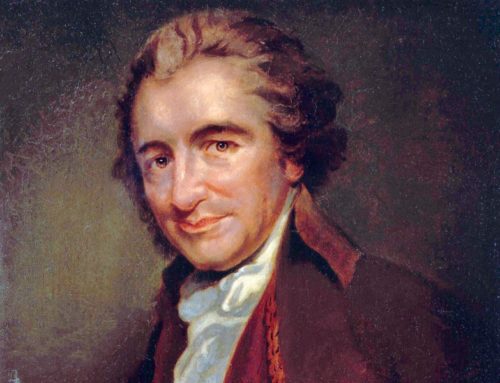

“Lay aside every encumbrance and the sin which so easily entangles us, and let us run with endurance the race that is set before us, fixing our eyes on Jesus, the author and perfecter of faith. —Hebrews 12:1a-2a
The Romanian Uprising Begins,
December 15, 1989
 ictators have a long and storied history of leaving this mortal world well before their demographics might suggest, due to their unbridled tyranny. Nicolae Ceauşescu, “President” of Romania, is a good case in point. His downward mortality arc began with an evangelical pastor, László Tőkés of the Reformed Church of Romania, standing athwart history calling, Stop!
ictators have a long and storied history of leaving this mortal world well before their demographics might suggest, due to their unbridled tyranny. Nicolae Ceauşescu, “President” of Romania, is a good case in point. His downward mortality arc began with an evangelical pastor, László Tőkés of the Reformed Church of Romania, standing athwart history calling, Stop!

Ceauşescu had become General Secretary of the Communist Party of Romania in 1965, after many years in the communist youth movement and serving various posts in the Soviet-dominated Party. Within four years he established the most repressive totalitarian regime in Eastern Europe. His oppression of the large Hungarian and German minorities living within Romanian borders was especially egregious, bringing protests from other European nations. Living standards plummeted as his “cult of personality” and massive surveillance by the secret police increased exponentially. Food rationing and disastrous economic investment even brought criticism from the Russians in the 1980s.

Nicolae Ceauşescu (1918-1989) was arrested in 1936 and imprisoned for two years for communist activities

Ceauşescu in 1965, General Secretary of the Romanian Communist Party and First “President” of Romania (1974-1989)
The tipping point came with Ceauşescu’s decision to bury ancient towns and villages and erect concrete housing towers, symbolic of the new Soviet man. He relocated rural populations into city collectives and systematically suppressed the churches, often with extreme physical brutality. In the town of Timişoara, Pastor Tőkés had had enough.
László Tőkés was the son of a Hungarian Reformed pastor. He followed his father into the Gospel ministry, living among the Hungarian population of Romania. Why so many Hungarians live in Romania is a long story, which cannot be told here. László was a persistent critic of the Ceauşescu regime and became one of the foremost dissident preachers in the nation. In 1988, Tőkés organized a cultural celebration for Reformation Day (October 31), inviting young people from many churches to attend. So his bishop banned all church youth activities in the region.

László Tőkés (1952- ) in 2007

Collage of various notable locations in the town of Timişoara, hometown of László Tőkés
A year later he ordered Tőkés to leave Timişoara by December 15 for a small out-of-the-way parish where he couldn’t be heard. Tőkés refused. Four thugs brandishing knives broke into his flat, and Securitate forces stepped aside while the pastor and his friends fought them off. As the deadline approached, several members of the parish church began a candlelight vigil outside the Tőkés home. They were soon joined by many church members and a few of the other local citizens. By the 15th of December, a solid cordon of people surrounded his home, keeping the eviction forces at bay in a peaceful manner. The mayor of Timişoara paid a visit, but stormed away when Tőkés remained in his apartment. Students from the local universities joined the protests as the Securitate set up water cannons lest the situation get out of hand.

Demonstrators in the streets of Timişoara, December 1989
Thousands of Hungarians and Romanians filled the streets singing hymns, and then “politically incorrect” patriotic songs which had been banned by the socialist state. The crowd surged to Communist headquarters, overwhelmed the militia, destroyed the water cannons and threw the pieces in the river. The army arrived and opened fire, killing dozens of demonstrators. On December 18, tens of thousands of workers in Timişoara took to the streets peacefully, and the city fell under control of the citizens.

Demonstrators face off against tanks and police forces in the streets of Bucharest
The news swept through Romania and the world as protests broke out in every city. Even some of the Securitate forces joined the people in the streets, till the “revolution” reached Bucharest, the capital. Ceauşescu and his wife fled in a helicopter. The armed forces of Romania switched sides. The tyrant was captured, put on trial and with his wife, and executed by firing squad on Christmas day, for “economic sabotage and genocide.” Of all the dominoes of the Soviet Empire which toppled, Romania was the one country where significant violence occurred, an outcome predictable for a narcissistic and bloodthirsty socialist dictator. It all began with a pastor who would not allow the state to dictate what should be said from the pulpit, and was willing to resist the state-controlled religious hierarchy who sought to muzzle him.

On December 22, Ceauşescu was forced to take refuge from protestors and managed to escape via helicopter

Elena Ceauşescu (1916-1989), along with her husband, was executed by firing squad on Christmas Day, 1989
Image Credits: 1 Nicolae Ceauşescu age 18 (Wikipedia.org) 2 Nicolae Ceauşescu (Wikipedia.org) 3 László Tőkés in 2007 (Wikipedia.org) 4 Timişoara collage (Wikipedia.org) 5 Timişoara demonstrations (Wikipedia.org) 6 Tanks in Bucharest (Wikipedia.org) 7 Ceauşescu in uniform (Wikipedia.org) 8 Elena Ceauşescu (Wikipedia.org)






